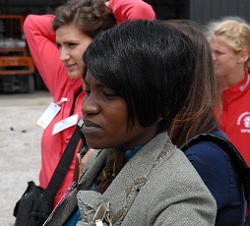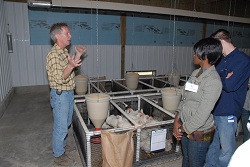 At the recent NAMA Convention I met Mitch Rouda who has just moved up at Farm Journal to President of their e-Media division. He has responsibility for all e-Media activity, including growth of the company’s 20 current e-titles and all online development, merger and acquisition activity. Mitch is a long time web guy who had his own business before joining Farm Journal
At the recent NAMA Convention I met Mitch Rouda who has just moved up at Farm Journal to President of their e-Media division. He has responsibility for all e-Media activity, including growth of the company’s 20 current e-titles and all online development, merger and acquisition activity. Mitch is a long time web guy who had his own business before joining Farm Journal
 I interviewed Mitch in between his own interviews that he was conducting at the Farm Journal reception to announce their new re-build of AgWeb.com which will be published this summer. He says it will be a complete re-do. One of the main changes will be in navigation to find information you’re looking for. He says there are 8,000 pages on the site now. It will also have a mobile version available too. You can see pictures and video from the reception on their Facebook page.
I interviewed Mitch in between his own interviews that he was conducting at the Farm Journal reception to announce their new re-build of AgWeb.com which will be published this summer. He says it will be a complete re-do. One of the main changes will be in navigation to find information you’re looking for. He says there are 8,000 pages on the site now. It will also have a mobile version available too. You can see pictures and video from the reception on their Facebook page.
We also talked about other things including, blogs and their rise as an information source. . At the time he was waiting on his iPad since he wanted a 3G version. He sees a lot of potential for the device to be a great tool to revitalize publications.
You can listen to my interview with Mitch here.










 The
The